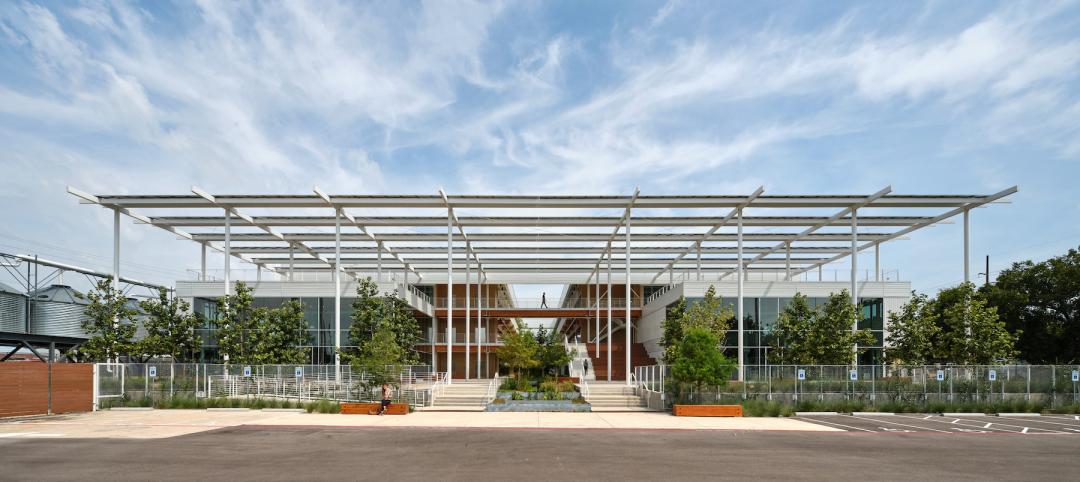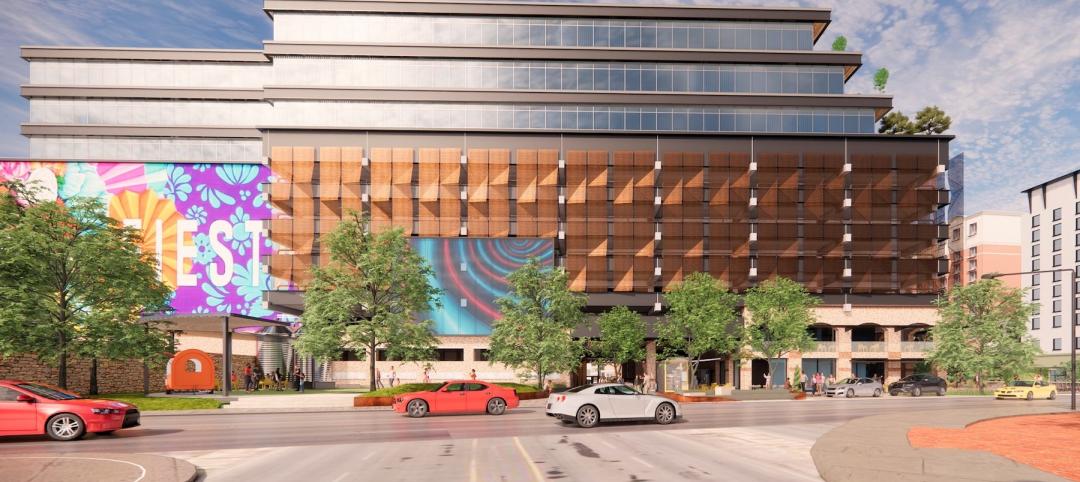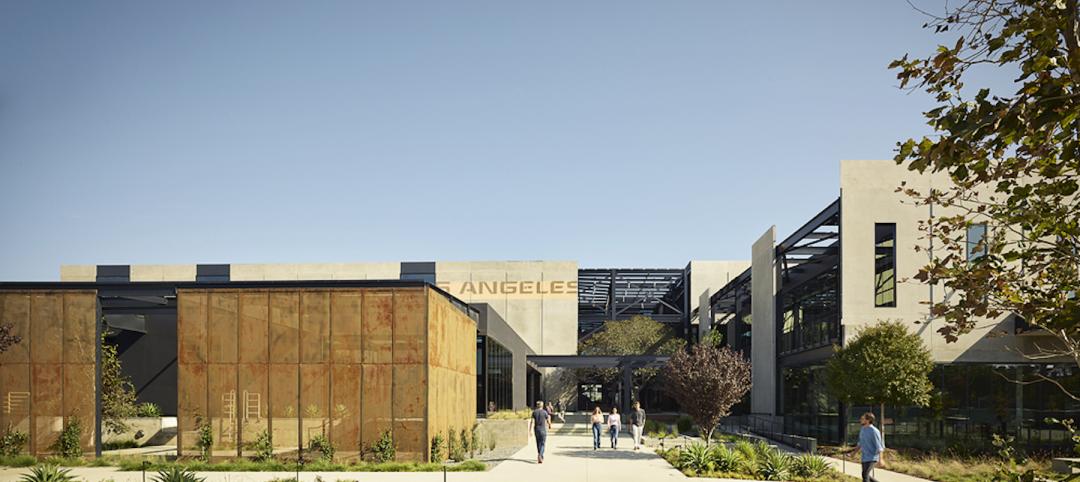What can companies be doing better to ensure that their workplaces provide the healthiest and most efficient environments for multigenerational employees who might have widely differing attitudes and approaches toward technology and collaboration?
That’s the primary question that Jodi Williams, senior workplace specialist for the architectural firm RTKL, poses in a white paper titled “2015 Trends in the Workplace.”
“Too often, clear and compelling business strategies fail to translate into the real environment,” Williams writes. “It’s partly about recruitment and retention—providing inviting, comfortable work environments that reinforce values and make employees feel like a part of a larger mission.”
Drawing from a range of source material, Williams identifies five trends that could improve employees’ job satisfaction and productivity, and a company’s profitability.
1. Wellbeing, not just Wellness
The average American sits 7.7 hours per day. Being sedentary for that long over a prolonged period of time has negative impacts on a person’s weight gain, which in turn makes a person more vulnerable to heart disease, brain function issues, leg disorders, and even more serious health problems.
While they are working, employees usually don’t get much exposure to natural light or the outdoors, either, even as studies show that access to both can make an employee more productive and less prone to absenteeism.
“Focusing on wellness is not enough,” claims Williams. The workplace itself needs to promote physical health as well as mental and social wellbeing that includes opportunities to engage in spontaneous encounters, freedom to move between social phases, opportunities for regular exercise, noise levels similar to those in nature, and meaningful change and sensory variability.
Designing a psychologically healthy workplace includes providing places of refuge. There should be a focus on culture and emphasis on professional and social interaction. The workplace should also offer views of the outdoors, and “regenerative” spaces indoors with views of plants, nature, fish, or fire.
Williams suggests that companies interested in workplace wellbeing would benefit from exploring Delos Building Wellness’ WELL Building Standard—a first-of-its-kind protocol for establishing human wellness within the built environment.
2. Staunching the Baby Boomer Retirement Tsunami
Workplaces are more diverse than ever, with as many as five generations working together in some companies. While that mixture is generally good news for companies, it can also create organizational and management friction, to say nothing of the disruption being caused by 10,000 Americans turning 65 years old every day.
Older Americans are choosing to postpone retirement, or at the very least work part time. And a growing number of companies, in an effort to persuade older workers to stay on longer, are extending their mandatory retirement ages, some to age 75. But companies must also face the reality that older workers are going to step aside at some point. So what are these companies doing to retain and cultivate their best younger talent?
“The workplace environment does matter when employees select a position,” Williams says. Companies need to consider what type of talent they are trying to attract and what types of spaces will help draw these people in and keep them in the organization.
Williams notes that companies are now making human resource decisions that accommodate multiple generations. That means addressing such issues as workplace ergonomics, technology, mentoring and knowledge transference, and how different generations prefer to collaborate.
She says that younger generations prefer workplaces that support knowledge. It is also important for companies to create flexibility for a varying workforce that might include more part-time workers and consultants. “We expect to see more hoteling type scenarios,” Williams predicts.
3. Having Enough Space to Collaborate
Collaboration, writes Williams, “continues to be a key emphasis for workplace design.” But companies need to decide what kind of collaboration works best for them and their employees. Architects and designers, therefore, must gain a better understanding of their clients’ organizational structures, particularly the role that meetings play in their business functions, to design offices with sufficient and large-enough meeting spaces as not to impede the collaborative and creative processes.
4. Connecting through Technology
At a time when more people work from home or remotely from a company’s offices, technology enables collaboration. But mobility isn’t always as simple as it looks. Williams notes that many companies still struggle with providing pervasive Wi-Fi; with digital security; and with providing tools that support in-person or online collaboration.
“Mobility is about more than just BYOD [bring your own device],” writes Williams. And real technology flexibility is going to impact an office’s design, furniture, software, and device selection, as well as workflow and remote accessibility.
5. Working Everywhere and Nowhere
Worker mobility is causing companies to rethink what kind of real estate they require, and whether long-term investments in leases or ownership are cost effective anymore.
Williams identifies options that companies now have at their disposal, such as “serviced offices” with short-term leases for smaller work groups; “speculative suites” within existing offices that can be up to 10,000 sf; and subleases of ready-to-use offices within buildings.
Williams points to “coworking” facilities that offer a variety of workspaces and basic supplies, designed to attract a mix of individuals for specific periods of time. These kinds of office situations are set up, she says, to create “synergistic” communities that bring together people from various backgrounds.
There’s also “Liquid Space,” an online company that enables its members to locate and book workplaces when they need them. (On its website, Liquid Space offers options for small and large meeting rooms, training rooms, price offices, open desks, coworking spaces, “touchdown” spaces, team spaces, and hotel meeting spaces. All of which are leasable by the hour or day.)
Related Stories
Office Buildings | Jul 19, 2022
Austin adaptive reuse project transforms warehouse site into indoor-outdoor creative office building
Fifth and Tillery, an adaptive reuse project, has revitalized a post-industrial site in East Austin, Texas.
Office Buildings | Jul 12, 2022
Miami office tower nears completion, topping off at 55 stories
In Miami, construction of OKO Group and Cain International’s 830 Brickell office tower is nearing completion.
AEC Business Innovation | Jun 15, 2022
Cognitive health takes center stage in the AEC industry
Two prominent architecture firms are looking to build on the industry’s knowledge base on design’s impact on building occupant health and performance with new research efforts.
Sustainable Design and Construction | Jun 14, 2022
For its new office, a farm in California considers four sustainable design options, driven by data
The architect used cove.tool’s performance measurement software to make its case.
Office Buildings | Jun 13, 2022
San Antonio’s electric utility HQ to transform into a modern office building
In San Antonio, Tex., the former headquarters of CPS Energy, the city’s electric utility, is slated to transform into 100,000 square feet of office and retail space on San Antonio’s famed River Walk.
Office Buildings | Jun 8, 2022
Former L.A. Times newsroom/printing plant remade into office campus
Phase 1 of The Press, an adaptive reuse project that is converting an old Los Angeles Times facility into a modern office campus, was recently completed in Costa Mesa, Calif.
Office Buildings | May 19, 2022
JLL releases its 2022 Office Fit Out Guide
JLL’s 2022 Office Fit Out Guide report provides benchmark costs to build out a range of office types across major markets in the United States and Canada.
Headquarters | May 10, 2022
JPMorgan Chase’s new all-electric headquarters to have net-zero operational emissions
JPMorgan Chase’s recently unveiled plans for its new global headquarters building in New York City that is rife with impressive sustainability credentials.
Building Team | May 6, 2022
Atlanta’s largest adaptive reuse project features cross laminated timber
Global real estate investment and management firm Jamestown recently started construction on more than 700,000 sf of new live, work, and shop space at Ponce City Market.
Office Buildings | Apr 28, 2022
A 48-story office tower to rise over boomtown Austin
In downtown Austin, Texas, a planned 48-story office tower, The Republic, recently secured its first major tenant—allowing for the groundbreaking by midyear.
















